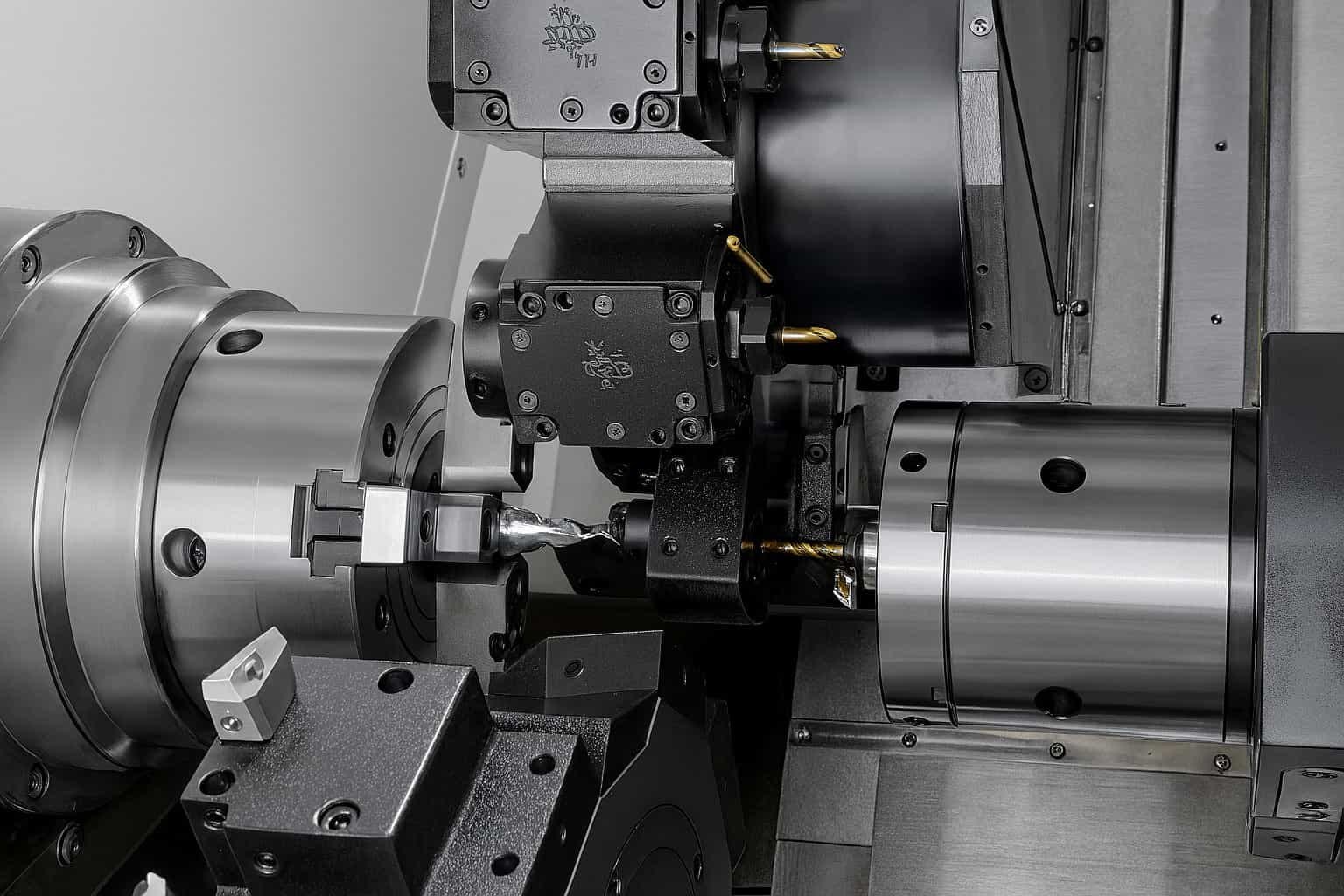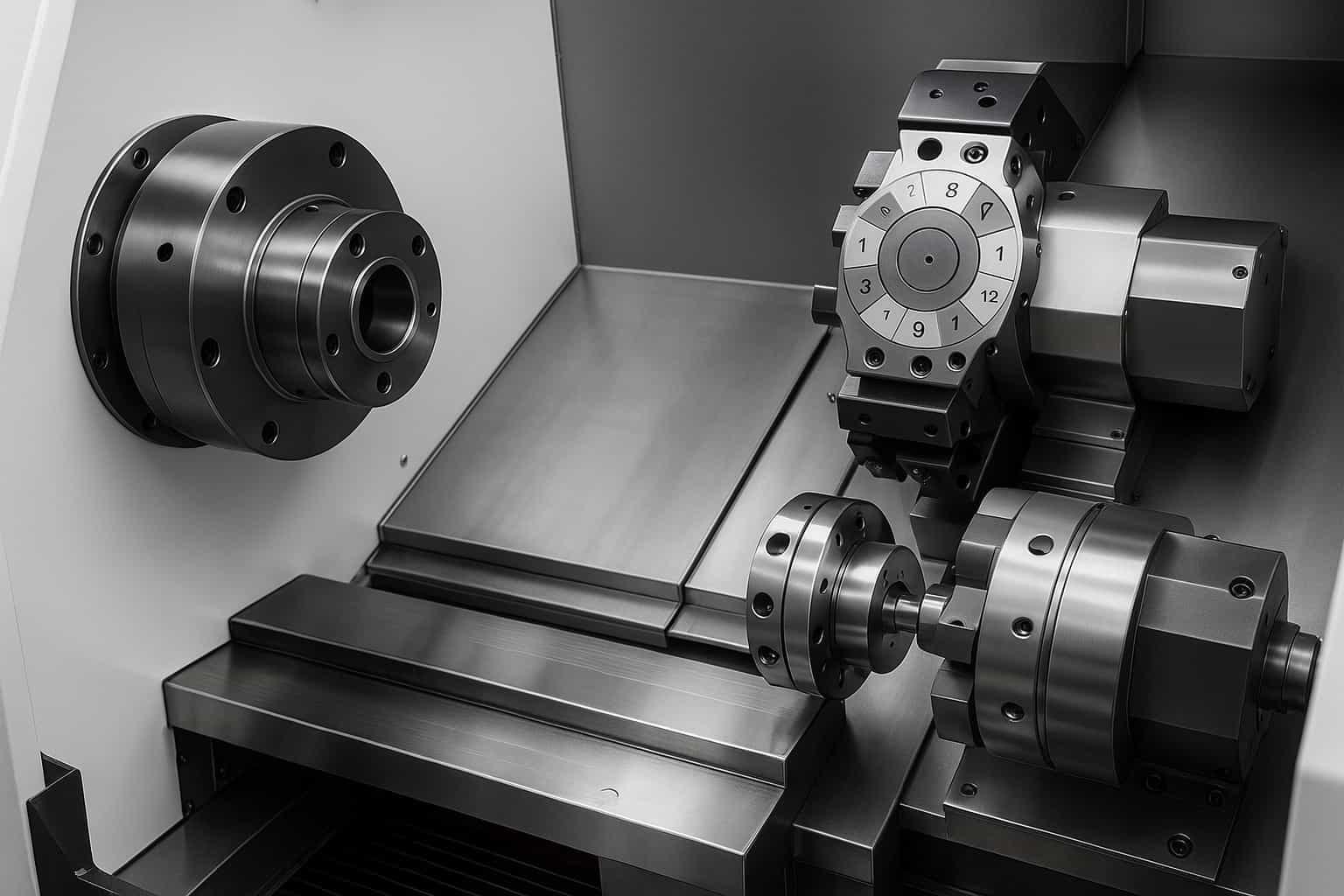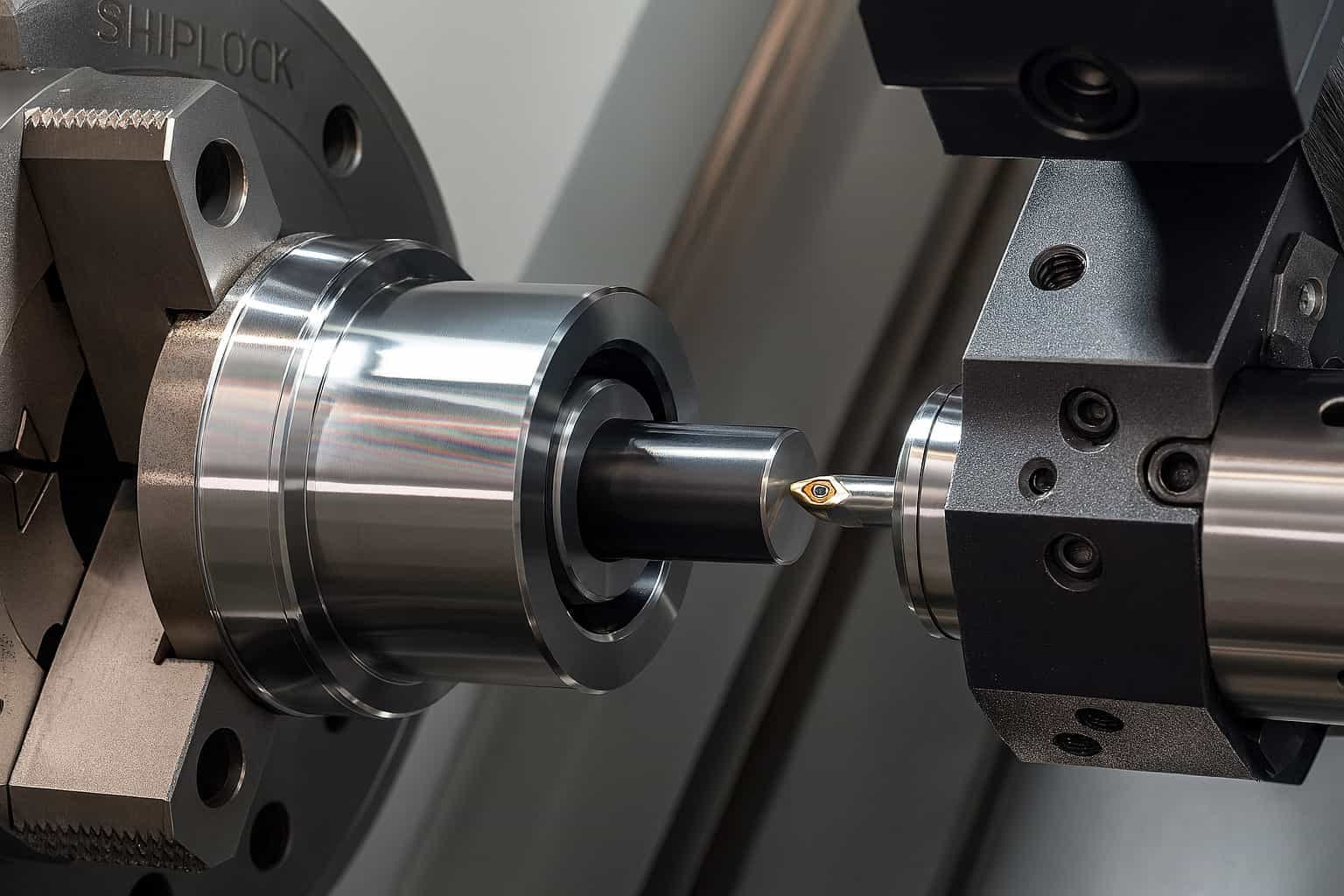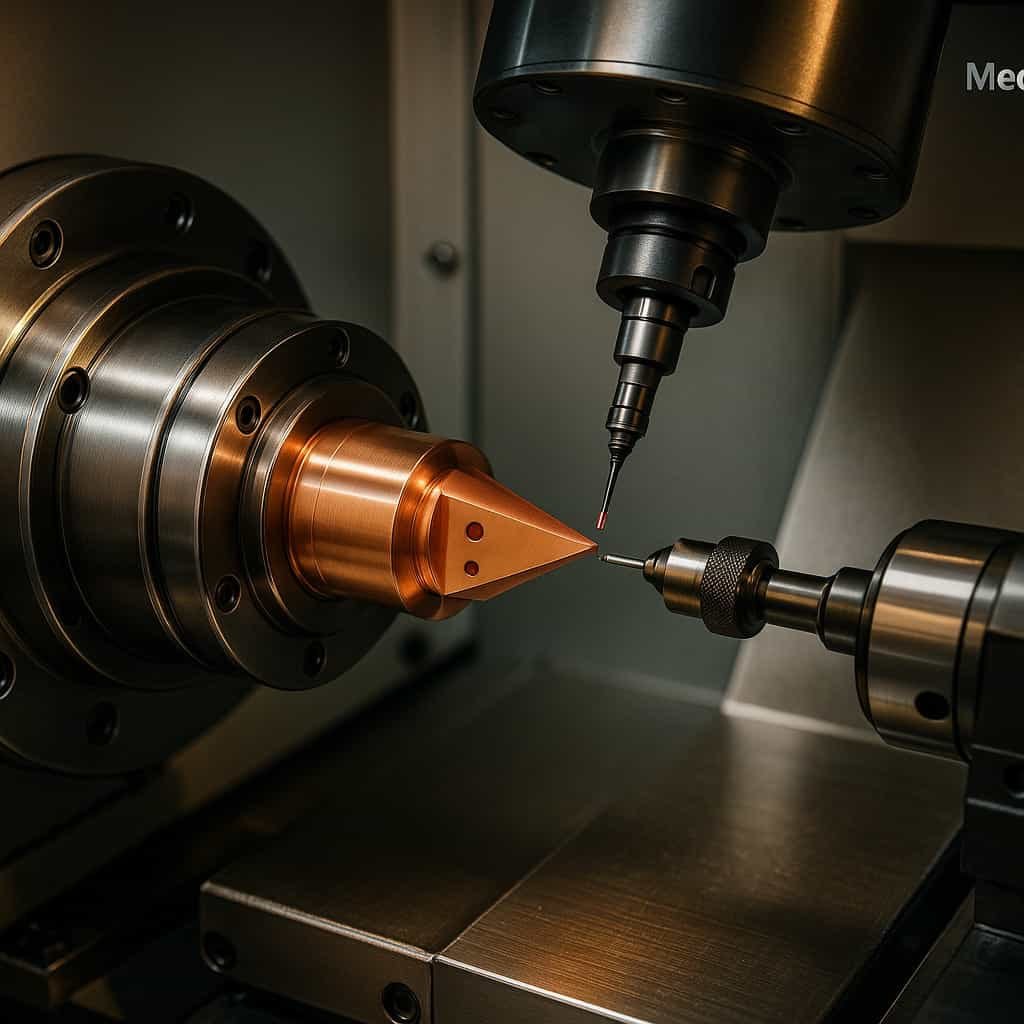What is Live Tool CNC Lathe?
A Live Tool CNC Lathe is a type of CNC (Computer Numerical Control) lathe equipped with motor-driven tools that can perform milling, drilling, and tapping operations in addition to standard turning tasks. This capability allows for more complex and varied part production.
Key Features of Live Tool CNC Lathe
- Motor-Driven Tools: These lathes have additional spindles for milling and drilling, offering greater versatility.
- Multi-Axis Control: Allows simultaneous control of multiple axes, facilitating complex geometries.
- Increased Efficiency: Combines multiple machining processes in a single setup, reducing production time.
Applications
- Automotive Industry: Used for producing complex engine components.
- Aerospace: Ideal for parts requiring precise dimensions and intricate designs.
- Medical Device Manufacturing: Suitable for crafting intricate medical instruments.
Live Tool CNC Lathes enhance machining capabilities by integrating milling and drilling with traditional turning, offering higher efficiency and complexity in manufacturing processes.
How Live Tool CNC Lathe Works
A Live Tool CNC Lathe operates by integrating rotating tools into a traditional lathe setup, allowing for milling, drilling, and tapping operations on a single machine. This enhances efficiency by reducing setup times and enabling complex geometries.
Key Components and Mechanism
- Spindle & Chuck: Holds and rotates the workpiece.
- Live Tool Turret: Houses rotating tools for various operations.
- Control System: CNC software for precise tool movement.
Operational Process
- Setup: Load workpiece and select tools.
- Programming: Input CNC code for desired operations.
- Execution: Machine performs turning, then switches to live tooling for additional tasks.
By utilizing live tooling, CNC lathes significantly streamline production, enhancing both speed and quality in manufacturing.
What m code is used to stop live tooling?
The M code used to stop live tooling is M05. This command halts the spindle or live tooling in CNC machining, ensuring that all rotational movement ceases immediately.

Key Details:
Context: Commonly used in CNC machining to safely bring operations to a halt.precision.
Function: M05 is a command in G-code programming.
Usage: Applied to stop the rotational movement of live tooling.
What Types of Machining Services Are Live Tool Lathes Used For?
Live tool lathes are primarily used for complex machining tasks that require both turning and milling operations within a single setup. They are ideal for producing intricate parts with high precision and efficiency.

Key Applications of Live Tool Lathes:
- Turning and Milling: Enables both operations without changing the machine.
- Drilling and Tapping: Precise holes and threads can be created in one go.
- Grooving and Slotting: Facilitates the creation of detailed grooves and slots on parts.
- Contour Machining: Allows for complex shapes and contours to be machined accurately.
- Cross-Drilling: Provides the ability to drill holes at various angles on cylindrical parts.
Benefits:
- Increased Efficiency: Reduces setup time and increases throughput.
- High Precision: Ensures tight tolerances and superior surface finishes.
- Versatility: Suitable for a wide range of materials including metals and plastics.
Live tool lathes streamline the machining process by integrating multiple operations, making them indispensable in modern manufacturing environments.
Live Tool Lathe vs Standard CNC Lathe
A Live Tool Lathe integrates milling and drilling functions into the lathe, allowing for more complex machining operations in a single setup. In contrast, a Standard CNC Lathe primarily focuses on turning operations.

Key Differences:
- Functionality:
- Live Tool Lathe: Enables additional milling, drilling, and tapping operations.
- Standard CNC Lathe: Primarily designed for turning operations only.
- Complexity:
- Live Tool Lathe: Suitable for producing more complex parts with fewer setups.
- Standard CNC Lathe: Ideal for simpler, rotationally symmetric parts.
- Setup:
- Live Tool Lathe: Reduces the need for multiple machine setups.
- Standard CNC Lathe: May require additional setups for complex shapes.
- Cost:
- Live Tool Lathe: Generally more expensive due to increased functionality.
- Standard CNC Lathe: More cost-effective for basic turning tasks.
Choosing between a Live Tool Lathe and a Standard CNC Lathe depends on the complexity of the parts being machined and the production requirements. For versatile and complex machining, the Live Tool Lathe is superior, while the Standard CNC Lathe excels in straightforward turning tasks.
Conclusion
A Live Tool CNC Lathe combines the power of turning and milling in one machine. It offers unmatched flexibility for manufacturers who need to produce complex parts more efficiently and with higher precision.


